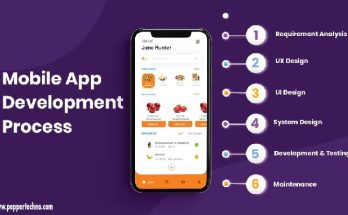Enhancing User Experience in Every Interaction
We are discussing about Enhancing User Experience. In today’s digital landscape, user experience (UX) has emerged as a critical factor in determining the success of digital products and services. From websites and mobile apps to software platforms and online marketplaces, enhancing user experience in every interaction is paramount to fostering user satisfaction, engagement, and loyalty. This article explores the importance of UX design, strategies for enhancing user experience across various digital touchpoints, and the impact of user-centric design principles on overall business success.

Understanding User Experience
1. The Fundamentals of User Experience
User experience encompasses the overall experience and satisfaction users derive from interacting with a product, system, or service. It encompasses various aspects, including usability, accessibility, visual design, performance, and functionality. A positive user experience is characterized by ease of use, efficiency, intuitiveness, and delight, fostering positive perceptions and encouraging repeat usage.
2. The Role of UX Design
UX design focuses on understanding user needs, preferences, and behaviors to create intuitive, user-friendly, and visually appealing interfaces. UX designers employ research methodologies, such as user interviews, usability testing, and journey mapping, to identify pain points, gather insights, and iterate on design solutions that meet user expectations and goals.
Strategies for Enhancing User Experience
1. User-Centric Design Approach
Adopting a user-centric design approach is fundamental to enhancing user experience in every interaction. This involves prioritizing user needs and preferences throughout the design process, conducting user research, creating personas, and designing intuitive user interfaces that align with user expectations and behaviors.
2. Seamless Onboarding Processes
The onboarding process plays a crucial role in shaping users’ initial impressions and experiences with a product or service. By designing seamless onboarding experiences, such as guided tours, interactive tutorials, and personalized welcome messages, organizations can help users navigate complex features and functionalities with ease, reducing friction and accelerating time-to-value.
3. Intuitive Navigation and Information Architecture
Clear and intuitive navigation is essential for guiding users through digital interfaces and helping them find the information or features they need quickly and effortlessly. Organizing content logically, using descriptive labels and navigation cues, and minimizing cognitive load contribute to a more intuitive user experience, reducing user frustration and enhancing engagement.
4. Responsive and Accessible Design
Ensuring that digital experiences are accessible to users of all abilities is essential for creating inclusive user experiences. Adopting responsive design principles, optimizing layouts for various screen sizes and devices, and adhering to web accessibility standards, such as WCAG (Web Content Accessibility Guidelines), enable organizations to reach a broader audience and demonstrate a commitment to accessibility and inclusivity.
5. Performance Optimization
Optimizing performance is critical for delivering fast, responsive, and reliable digital experiences. By minimizing loading times, optimizing page load speeds, and reducing latency, organizations can enhance user satisfaction, reduce bounce rates, and improve conversion rates, particularly in mobile environments where users expect instant gratification.
The Impact of User Experience on Business Success
1. Driving Customer Satisfaction and Loyalty
A positive user experience fosters customer satisfaction, loyalty, and advocacy, driving repeat business and referrals. Satisfied users are more likely to engage with products or services, recommend them to others, and remain loyal to brands that consistently deliver exceptional experiences.
2. Improving Conversion Rates and Revenue
User-centric design principles enhance conversion rates by reducing friction, simplifying decision-making processes, and creating persuasive calls-to-action. A seamless user experience encourages users to complete desired actions, such as making a purchase, signing up for a service, or submitting a form, leading to increased conversions and revenue generation.
3. Enhancing Brand Reputation and Differentiation
Delivering exceptional user experiences sets organizations apart from competitors and reinforces positive brand perceptions. Brands that prioritize user experience demonstrate a commitment to customer satisfaction and innovation, earning trust, loyalty, and recognition in the marketplace.
4. Reducing Support Costs and User Errors
By designing intuitive and user-friendly interfaces, organizations can minimize user errors, reduce support inquiries, and lower customer service costs. Clear instructions, contextual help, and error prevention mechanisms empower users to self-serve and resolve issues independently, enhancing overall efficiency and user satisfaction.
Conclusion
In a digital world where competition is fierce and user expectations are continually evolving, enhancing user experience in every interaction is essential for driving business success and fostering long-term relationships with customers. By adopting user-centric design principles, optimizing digital touchpoints, and prioritizing usability, accessibility, and performance, organizations can create memorable, delightful, and impactful user experiences that resonate with users and differentiate their brands in the marketplace. In the pursuit of enhancing user experience, organizations can unlock new opportunities for growth, innovation, and customer loyalty, positioning themselves for sustained success in the digital age.



